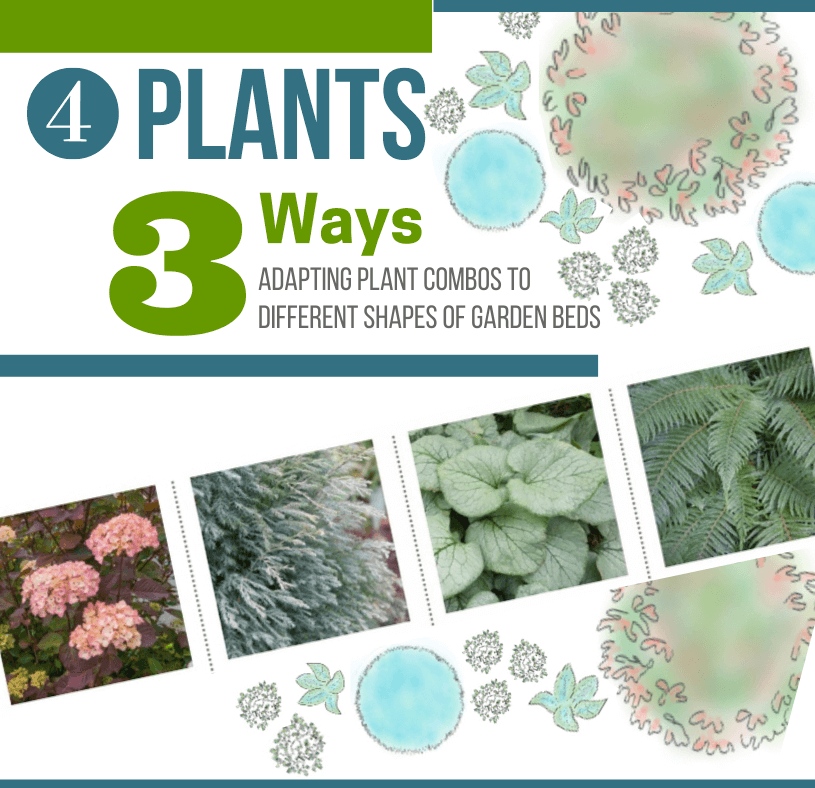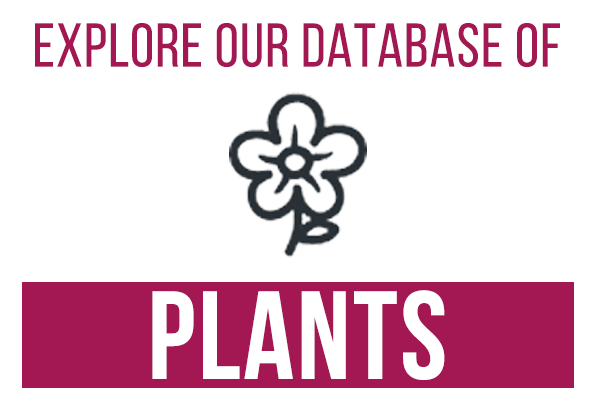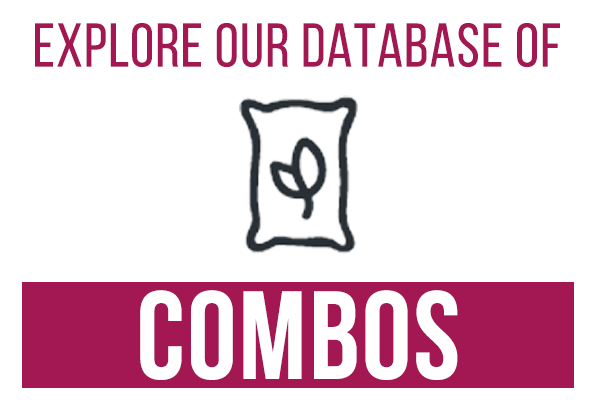The possibilities for garden beds in different shapes are as varied as the gardeners who tend them. The internet offers a gushing, endless stream of luscious garden photos that entice, but offer little guidance in terms of how to translate that picture into an actual, in-the-ground garden.
In this post, I demonstrate how to lay out three different gardens, using the same four plants to fit three differently-shaped (but quite typical) garden beds:
- A rectangular bed, approximately 6 feet deep and 12 wide, that is viewed from one side—typical of a front entry bed up against a house
- An island bed, that's approximately 7 to 8 feet wide and 15 feet long, that one can walk around and view from both sides
- And a corner bed, that fits into an "L"-shape space
I'll show you how to tweak the layout and adjust the quantities of each plant to accommodate these different types of spaces. To decipher the three planting layouts, refer to the graphic symbol shown with each plant in the grid below. The quantity required of each plant is included with each variation.
Meet the 4 Plants
First things first: we’ve prescreened the four plants in our example to make sure they all want the same growing conditions. They’re all shade-tolerant; happiest in part-shade, though morning sun and afternoon shade would be ideal. And they’ll need some supplemental summer water to look their best.
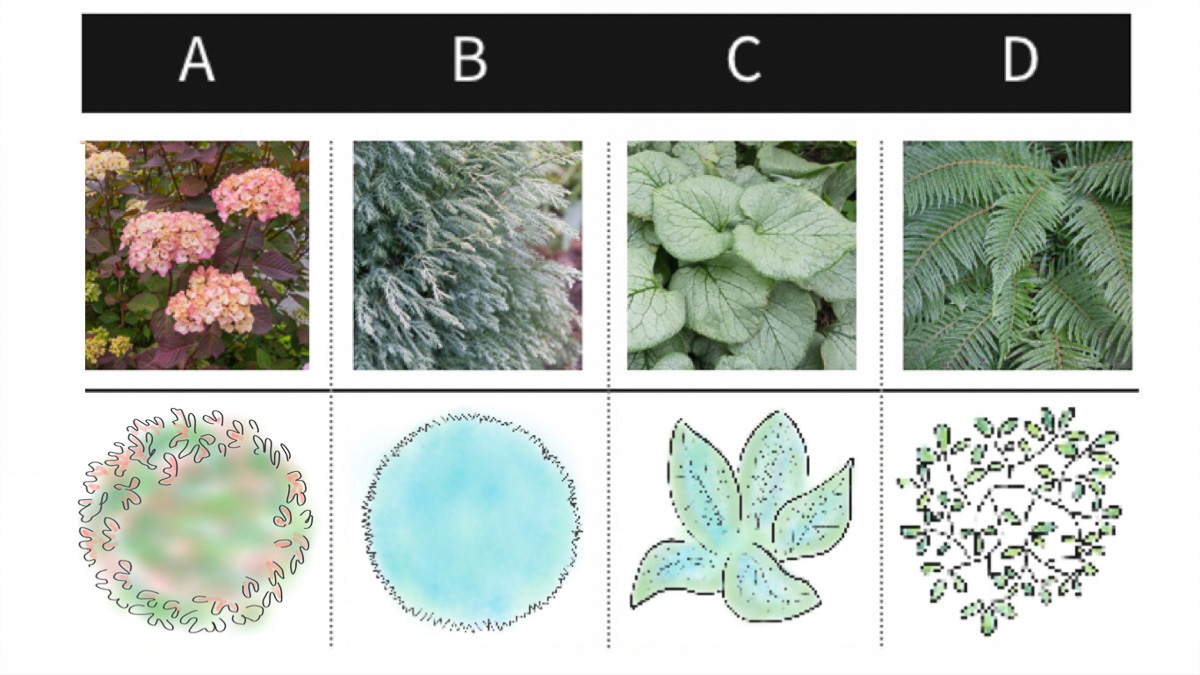
🅐 Hydrangea serrata 'Preziosa
The centerpiece, and largest plant in our vignette. This deciduous shrub was selected for its interesting and long-lasting blooms that begin as ivory and, over the course of the summer, take on increasingly rich and colorful tones in shades of deep pink to maroon. Attractive foliage earns it extra credit points and ensures it a spot in many a garden. It will ultimately grow to about 5 to 6 feet wide and tall.
🅑 Chamaecyparis lawsoniana 'Barry's Silver'
This slow-growing, shade-tolerant dwarf conifer adds all-season, evergreen structure with its froth of soft-to-the-touch, silvery-blue foliage that brightens a shady spot. It will eventually reach 2 to 3 feet wide and 4 to 6 feet tall.
🅒 Brunnera macrophylla 'Looking Glass'
In spring, frothy blue flowers dominate the show. But its real claim-to-fame is the reflective quality of the silvery-blue, heart-shaped foliage that can
really light up a shady corner in your garden. This mounding perennial with coarse foliage makes a bold statement. Allow about 18” spread for each
plant. (If you're unable to find H. 'Looking Glass', Brunnera 'Jack Frost' is a perfectly fine substitute.)
🅓 Polystichum setiferum
A gorgeous evergreen fern with delicate, arching fronds that look great for months on end. The soft shield fern is easy to grow and low maintenance; but does look best if the previous year's fronds are removed, as the new ones unfurl at the base in spring.
Rectangular Entry Bed

This simple and easy-to-copy vignette would work very well at a front entry. The selected plants are all well-behaved—they won’t grow too large, too quickly in this small spot. The overall scene strikes an agreeable balance between providing enough year-round structure to warrant a front entry spot, but also offers a nice seasonal progression of pretty blooms that greet you when you come home.
Island Bed
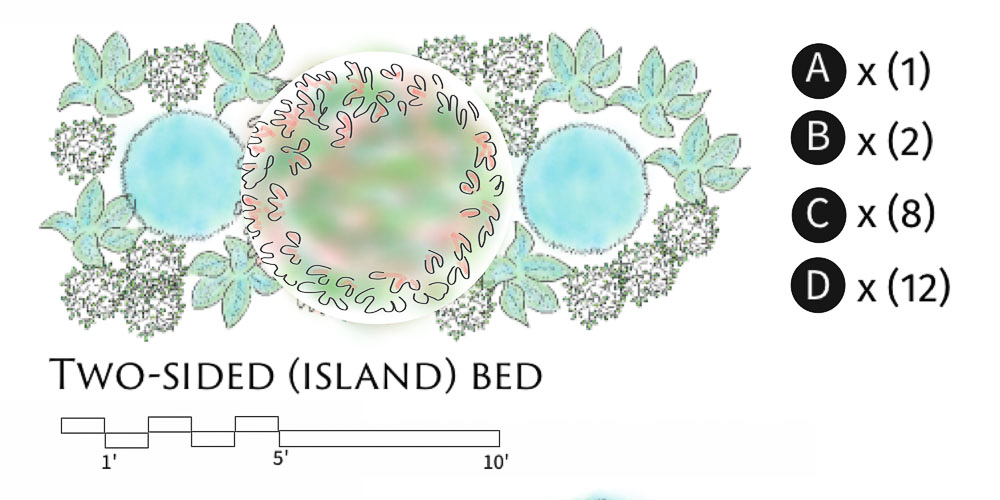
This subtle re-configuration includes a few more of the lower growing, supporting players—brunnera and fern—to cover the "knees" of the Hydrangea
from both sides. The additional conifer adds weight to the composition, so that each side is in balance, though not symmetrical. Both of these changes
result in a vignette that holds up to scrutiny when viewed from both sides.
Corner Bed

This vignette will soften a corner with plants. It's perfectly suited for a nook created by an ell in your home's perimeter, or improve your view from
inside your house if you plant it in a back corner of your lot. Either way, it's been rearranged into an asymmetrical layout using our simple palette
of four plants.
advertisement
Little by little, I'm adding additional planting plans to help you implement the plant combinations from eGardenGo in your garden. While there are a number of plans available for download, it's an ongoing process. In the meantime, I hope that this post will provide some guidance on how to think about adapting the plant combinations from the site to work in differently-shaped planting beds in your garden.
For purposes of illustration, this demo has been simplified from what you'll encounter in your real-life garden (sorry, no magic bullet here). Let me know if you have questions in the comments below and I'll do my best to answer them! :-)

